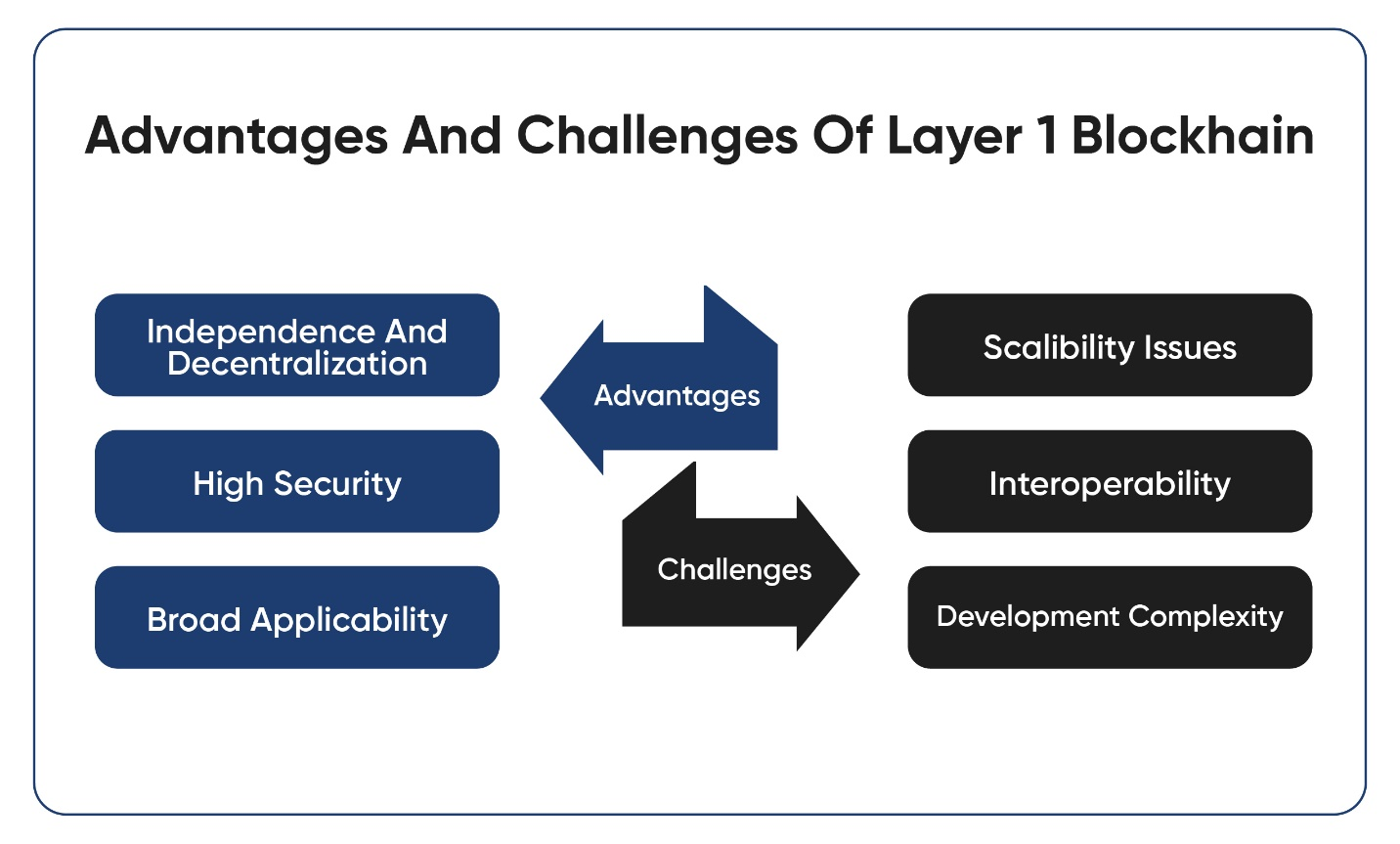The promise of blockchain technology – a secure, transparent, and decentralized system for recording transactions – has sparked a revolution across various industries. However, as blockchain adoption grows, a critical challenge emerges: scalability. Existing Layer 1 protocols, the foundational blockchains like Bitcoin and Ethereum, struggle to handle a surging volume of transactions. This translates to slow processing times and high transaction fees, hindering the widespread adoption of blockchain technology.

Understanding the Scalability Bottleneck
It’s crucial to understand the limitations that hinder scalability in Layer 1 protocols. Most Layer 1 networks rely on a consensus mechanism to validate transactions and maintain network security. However, these mechanisms often involve complex computations, creating a bottleneck. For instance, Bitcoin’s Proof-of-Work (PoW) consensus mechanism, while secure, is computationally expensive, limiting the number of transactions it can process per second.
Scalability Solutions: A Multi-pronged Approach
Several innovative solutions are being explored by Layer 1 protocols to address scalability limitations. Let’s explore some of the most prominent approaches:
Sharding: This technique partitions the blockchain into smaller segments called shards. Each shard holds a subset of the overall transaction data. Multiple nodes can then process transactions in parallel across different shards, significantly increasing network throughput. Ethereum 2.0 is a prime example of a Layer 1 protocol implementing sharding to improve scalability.
Sidechains: These are independent blockchains that operate alongside the main blockchain (Layer 1). Transactions are batched and transferred to the sidechain for faster processing. Once validated, the results are sent back to the main chain. Sidechains offer more flexibility and scalability compared to the main chain, but security might be a concern as it relies on the security of the main chain. Polygon (MATIC) is a popular example of a sidechain solution.
Off-chain Solutions: These solutions process transactions outside the main blockchain altogether. Lightning Network, a payment channel network built on top of Bitcoin, is a prime example. Here, users establish off-chain channels to conduct multiple transactions without requiring individual validation on the main chain. Once the transactions are complete, the final state is settled on the main chain. Off-chain solutions offer significant scalability improvements but introduce additional complexity and potential security risks.
Deep Dive into Blockchain Layer 1 Protocols: Understanding the Foundation
Evaluating the Effectiveness and Adoption Rates
Each scalability solution has its own set of advantages and disadvantages. Here’s a closer look:
Sharding: While promising for scalability, sharding can introduce complexity in terms of data availability and inter-shard communication. Additionally, implementing sharding requires significant technical expertise and network upgrades, which can be a lengthy process.
Sidechains: Sidechains offer a faster development cycle and greater flexibility compared to sharding. However, they rely on the security of the main chain, and transaction fees might still be high if transferred back to the main chain.
Off-chain Solutions: Off-chain solutions can be highly scalable and provide faster transaction processing. However, they introduce additional complexities and potential security risks. Moreover, these solutions are not fully decentralized as they rely on the underlying Layer 1 protocol for final settlement.
The adoption rates of these solutions vary across different Layer 1 protocols. Ethereum 2.0 is actively pursuing sharding as a core scalability solution. Platforms like Polygon (MATIC) have successfully implemented sidechains to offload transaction processing from the Ethereum mainnet. Lightning Network is gaining traction with Bitcoin, offering faster and cheaper transactions for small payments.
Challenges and Looking Ahead
Despite the advancements in scalability solutions, several challenges remain:
Security Trade-offs: Some scalability solutions, like sidechains, can potentially compromise on the security guarantees offered by the main chain. Finding ways to maintain a high level of security while scaling efficiently continues to be a challenge.
Decentralization vs. Scalability: Achieving both decentralization and scalability remains a balancing act. Some solutions, particularly off-chain options, introduce additional centralization points. Finding ways to maintain a distributed network while achieving high transaction throughput is crucial.
Interoperability: With different Layer 1 protocols adopting various scalability solutions, ensuring interoperability between them becomes critical. Enabling seamless communication and transfer of assets between different blockchains will be crucial for blockchain’s widespread adoption.

The Role of Digital Asset Specialists
As blockchain technology matures and Layer 1 protocols implement various scalability solutions, the role of digital asset specialists becomes increasingly important. Here’s how:
Enhancing ROI with Digital Asset Specialists: Understanding the nuances of different Layer 1 protocols and their scalability solutions is crucial. Digital asset specialists can provide insights into the technical specifications, security features, and scalability potential of various Layer 1 networks.
Long-Term Investment in Digital Assets: While some investors seek short-term gains in the crypto market, others are interested in long-term growth. Layer 1 protocols with strong fundamentals, a focus on scalability, and a proven track record are better suited for long-term investment strategies.

The Future of Blockchain Scalability
The future of blockchain scalability is intertwined with the ongoing evolution of Layer 1 protocols. Here are some key trends to watch:
Security in Digital Asset Management: Security remains a paramount concern in the digital asset space. Layer 1 protocols with robust security features and scalability solutions will be increasingly attractive for digital asset management companies and cryptocurrency fund administrators.
Transparent Investment Solutions: Layer 1 protocols, by their very nature, promote transparency. Digital asset specialist firms that leverage Layer 1 solutions with strong scalability features can educate people with greater transparency into these options.
DeFi Finance Consulting Services: Decentralized Finance (DeFi) leverages blockchain technology, particularly Layer 1 protocols, to offer innovative financial services. Digital asset specialists specializing in DeFi can inform people about the rapid development in the field, helping them capitalize on the potential of DeFi solutions built on top of scalable Layer 1 protocols.
Digital Asset Specialists for Startups: Startups building on top of Layer 1 protocols require specialized expertise. Digital asset specialists can provide these startups with information on topics like tokenomics, ensuring they understand Layer 1 protocols effectively.
The quest for blockchain scalability solutions is an ongoing process. Layer 1 protocols are constantly innovating and experimenting with new approaches to address the ever-growing demand for faster and cheaper transactions. While sharding, sidechains, and off-chain solutions offer promising advancements, the future of scalability likely lies in a combination of these approaches. As Layer 1 protocols continue to evolve and implement effective scalability solutions, the entire blockchain ecosystem will benefit from increased efficiency, wider adoption, and the potential to unlock the full potential of digital assets across various industries. Work with Kenson Investments to stay updated on these developments by engaging with our blockchain and digital asset consulting services. Our digital assets consulting team, along with our real world asset consultants and cryptocurrency investment consultant, will guide you through the dynamic landscape of digital assets.














